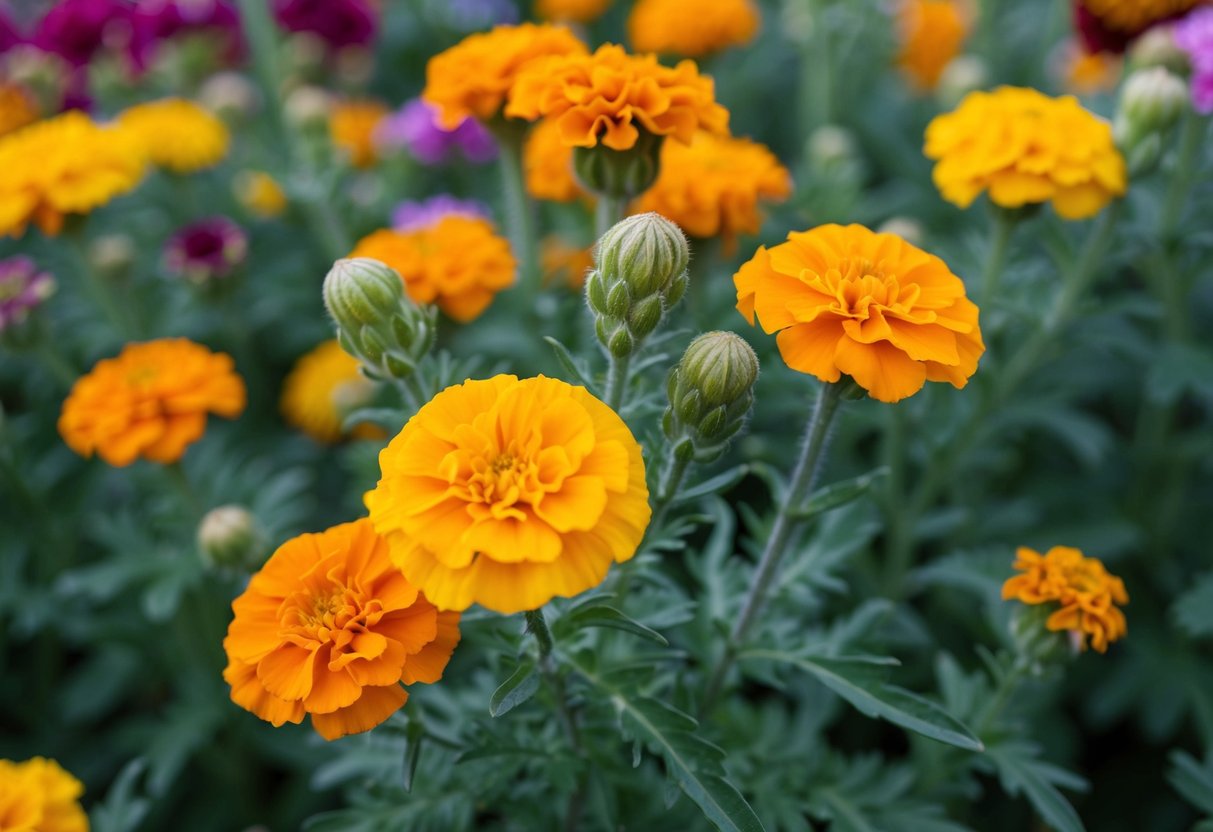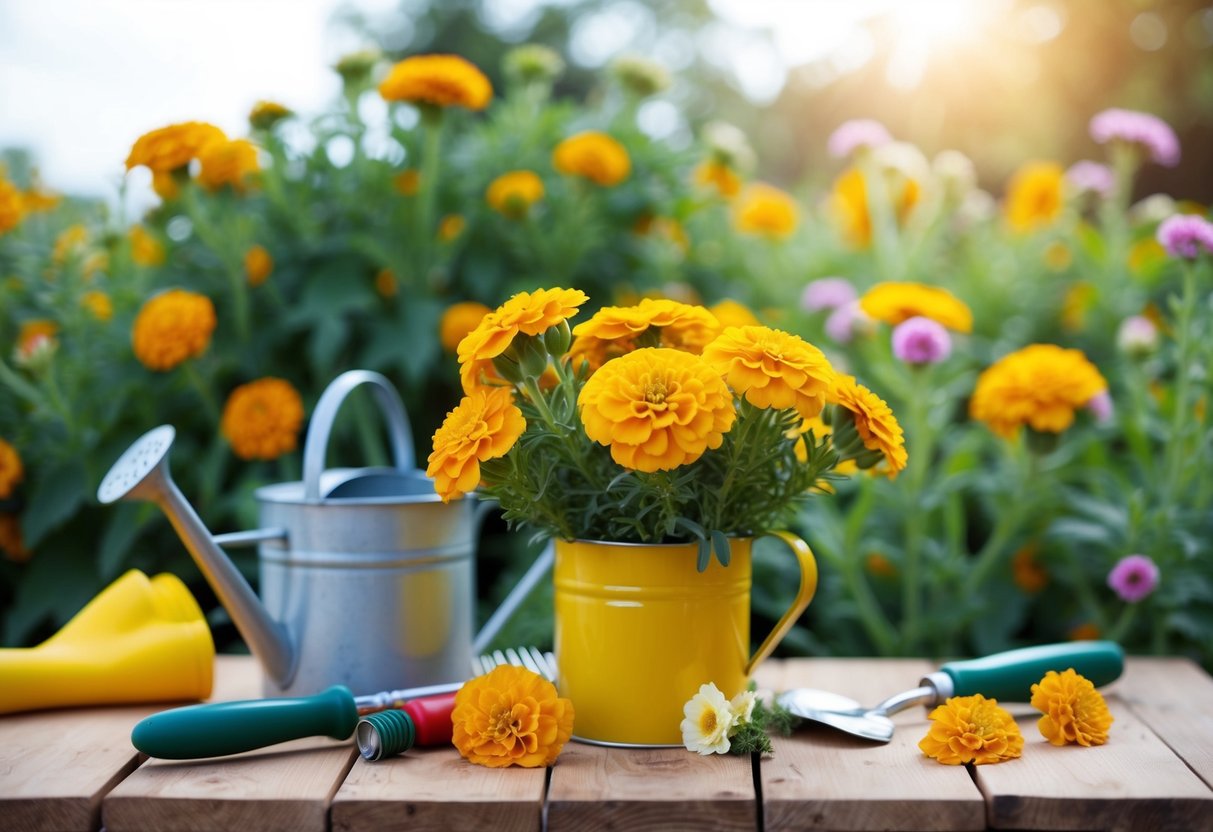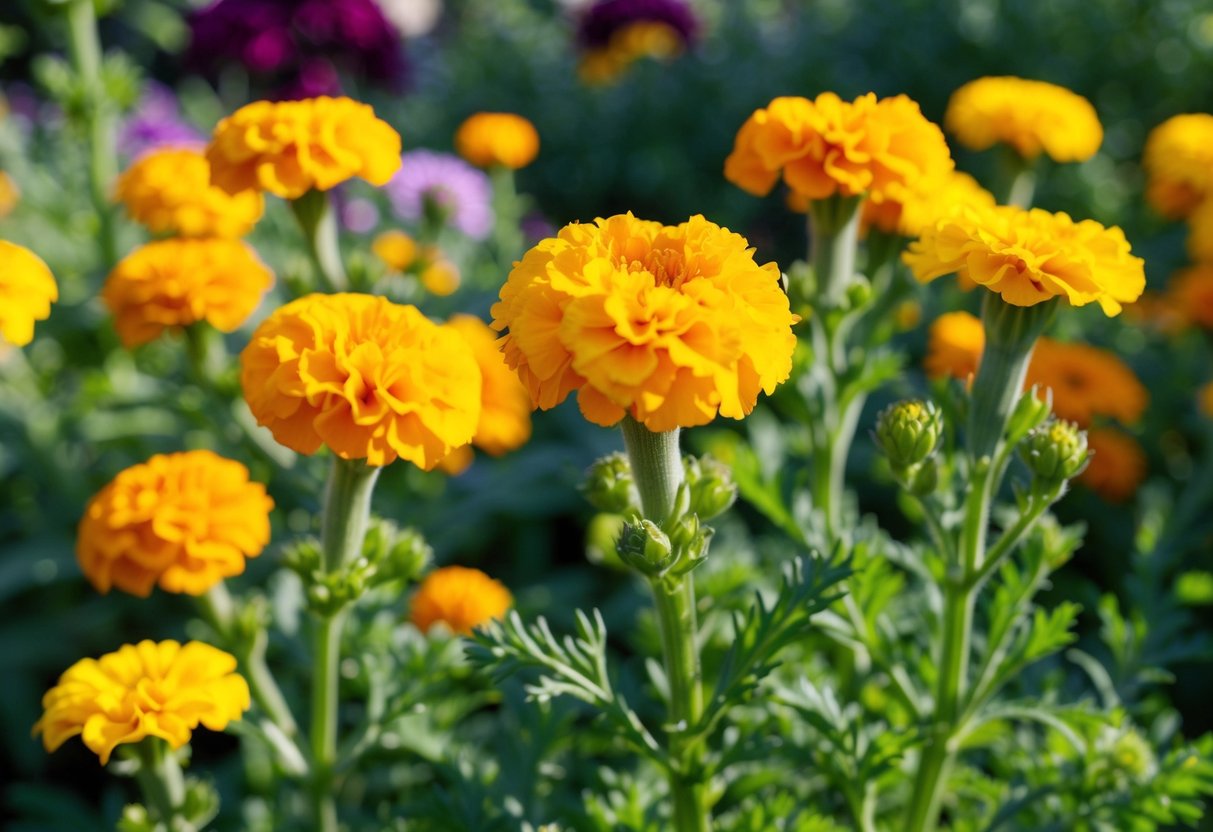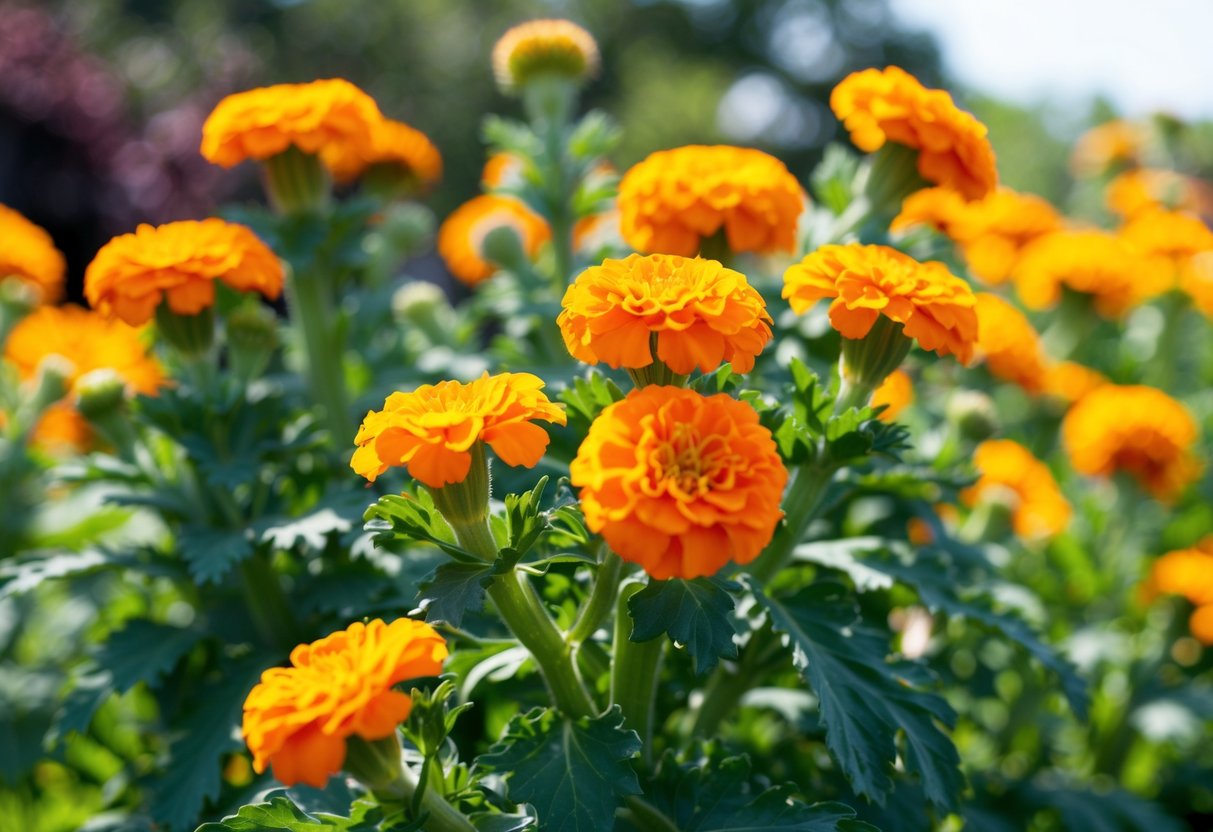Do Marigolds Flower Twice? Tips for a Blooming Encore
Are you curious if marigolds can bloom more than once in a season? You’re not alone! These vibrant, colorful flowers are a popular choice in gardens everywhere, known for their cheerful appearance and ease of care. When you plant marigolds in your garden, you might wonder about their blooming habits and whether you can enjoy their beauty more than just once.

Marigolds are typically annuals, which means they complete their life cycle in one growing season and are not known to flower twice. However, deadheading marigolds—a process of removing faded blooms—can sometimes encourage them to produce new flowers. This extends their blooming period, allowing you to enjoy their bright hues for longer.
Growing marigolds is quite simple, and they thrive in full sun and well-draining soil. By providing these conditions, you’ll have a garden filled with marigold flowers that brighten your outdoor space all season long. Whether you already love marigolds or are considering adding them to your garden, there’s always something new to discover about these delightful plants.
Understanding Marigolds

Marigolds are known for their vibrant colors and ease of care. These flowers are part of the aster family and can thrive in a variety of gardens. You will learn about the different types of marigolds, their rich history, and their vital role in garden ecosystems.
Varieties of Marigolds
There are several types of marigolds, each with its own unique charm. Tagetes erecta, also known as the African or American marigold, produces large, bold blooms. French marigolds (Tagetes patula) are smaller and bushier with a range of colors from deep reds to bright yellows. Signet marigolds (Tagetes tenuifolia) have a more delicate appearance with finely divided foliage. Don’t forget calendula, often called pot or English marigold, which belongs to a different genus but is equally beloved for its bright, cheerful flowers. These variations make the marigold a versatile choice for many different garden styles.
Cultivation and History
This flower’s history stretches from the Americas to Europe and back again. French marigolds crossed the ocean with European explorers and became popular in France. African marigolds made their way back to the Americas. These flowers thrive in warm climates and enjoy plenty of sunlight, often blooming in the summer months. They are annuals, which means they complete their life cycle in one growing season. Their adaptability to various soil types ensures they are easy to cultivate, often self-seeding from one year to the next. This makes marigolds a long-term addition to your garden with minimal effort.
Marigold’s Place in the Garden Ecosystem
Marigolds are more than just pretty flowers; they play a vital role in garden health. They are known for their pest-repellent properties, deterring nematodes and other unwanted insects. By planting marigolds, you protect your vegetables and other plants naturally, without harmful chemicals. These flowers also attract pollinators such as bees and butterflies, enhancing biodiversity in your garden. Marigolds are a perfect blend of beauty and utility, creating a healthier and more vibrant ecosystem around them. Remember to plant them strategically alongside other crops to maximize these benefits.
Planting and Care Guide

Growing marigolds is rewarding and straightforward. Learn how to plant them, maintain their health, and know when to expect their vibrant blooms.
When and How to Plant Marigolds
You should plant marigolds in the spring after the danger of frost has passed. This ensures the seeds or young plants have the best chance to thrive. Choose a spot with full sun since marigolds love sunlight and warmth.
Use well-drained soil with a neutral pH level of 6.0 to 7.0. You can plant seeds about 1 inch apart and cover them with 1/4 inch of soil. If using transplants, water them thoroughly after planting. A bit of fertilizer can help at this early stage, though marigolds aren’t too fussy.
Marigold Maintenance
For healthy marigolds, pay attention to watering and soil condition. Water regularly to keep the soil moist but avoid letting it become waterlogged, as this can cause root rot. Deadheading, or removing spent blooms, encourages more flowers to grow.
Maintain well-drained and fertile soil, and try to prevent disease by keeping foliage dry. If needed, apply a rooting hormone to strengthen young plants. Don’t worry too much about fertilizers as marigolds often do well in leaner soils. Just ensure your soil is not overly acidic.
When to Expect Blooms
Marigolds typically bloom throughout the summer. Depending on the variety, you could see flowers as soon as a few weeks after planting. French marigolds tend to bloom faster, while African marigolds may take a bit more time.
You can expect a colorful display that lasts until the frost in your area. To maximize flowering, make sure your marigolds get plenty of sunlight and are planted in fertile, well-drained soil. With proper care, these summer flowers can brighten your garden over several months. Keep an eye out for any pests that may harm your plants.
Flowering and Reblooming

Marigolds are known for their vibrant colors, including gold, orange, red, white, and yellow. Understanding how they flower and how you can encourage reblooming ensures their beauty lasts longer in your garden.
How Marigolds Flower
Marigolds are sun-loving plants, thriving in full sunlight. They typically bloom in vibrant colors like gold, orange, red, white, and yellow. The flowering process begins when the weather warms up, and with proper care, they can produce multiple blooms throughout the season. These flowers add splashes of color to gardens and are easy to grow.
To maximize blooming, marigolds need well-drained soil and consistent watering without over-saturating. Fertilizing once a month with a balanced fertilizer can support healthy growth and blooming.
Deadheading for Reblooming
Deadheading involves removing faded or dead flowers from the plant. This process encourages marigolds to produce more blooms. If you notice a marigold losing its vibrant colors, it might be time to deadhead. The goal is to prevent the plant from going into seed production, which signals the end of new blooms.
To deadhead, use clean scissors to cut off the spent flowers just above the next set of leaves. By doing this regularly, you stimulate the plant to redirect its energy toward making new, vibrant flowers.
Extending the Blooming Season
Extending the blooming season of marigolds involves specific care. Start with planting marigolds where they will receive plenty of sunlight—at least six to eight hours a day. Adequate water and nutrients also keep them healthy and ready to rebloom. During hot, dry spells, extra watering might be necessary to keep them hydrated.
In cooler climates, you may need to bring them indoors or provide some cover during colder months. Keeping them in pots makes them easier to move. Pruning back plants after the main blooming period can also help stimulate new growth and reblooming, allowing you to enjoy their colors longer.
Benefits of Growing Marigolds

Growing marigolds in your garden offers many advantages. Not only do they enhance your garden’s beauty, but they also support healthier plant growth by attracting helpful insects and keeping pests at bay.
Companion Planting with Marigolds
Marigolds are excellent companion plants. They can be grown alongside various fruits and vegetables. These vibrant flowers help promote the health of neighboring plants. They release natural chemicals that can deter pests and protect your crops. For example, planting marigolds with tomatoes or peppers can reduce harmful insects. The value of marigolds in a companion planting scheme lies in these protective traits, making them an essential part of an effective gardening strategy.
Attracting Pollinators and Beneficial Insects
Marigolds are great at attracting pollinators and beneficial insects. Bees, butterflies, and other helpful insects are drawn to their bright colors and fragrant blooms. Serving as a magnet for these creatures can help improve the pollination of fruits and veggies in your garden. This boosts the yield and quality of your crops. Additionally, when you include marigolds like the signet marigold in your garden, you create a thriving ecosystem where flowers and food plants benefit together.
Natural Pest and Nematode Control
Using marigolds for natural pest and nematode control is a smart choice for gardeners. Certain marigold types can deter pests and nematodes, which are tiny worms that damage plant roots. Marigolds act as a trap crop by attracting pests away from delicate plants. This is especially useful for gardens with vegetables prone to worm attacks. By planting marigolds, you can naturally control these plant threats without harsh chemicals.
Propagation and Sustainability

Marigolds are easy to propagate and can enhance your garden’s sustainability. By focusing on collecting seeds and using cuttings, you can create a self-sustaining garden. These methods help maintain vibrant marigold displays year after year.
Collecting and Saving Seeds
Collecting marigold seeds is simple. As the blooming season ends, let some flowers dry on the plant. Once the petals fall, the seed heads will form. Look for dry and brown seed heads.
Carefully remove them from the plant. Open the heads to find the seeds inside.
Store these seeds in a cool, dry place over winter. When spring arrives, you can directly sow them into well-draining soil. This method ensures you have fresh marigolds each year without purchasing new seeds. Marigold seeds are usually quite hardy and give you healthy plants for different garden uses.
Propagating Marigolds from Cuttings
To propagate marigolds from cuttings, choose healthy plants. Select a 3-4 inch cutting from a strong stem without flowers. Remove the lower leaves to prevent rot. Place the cutting in potting soil that drains well.
Keep the soil moist and place the cutting in indirect light. This encourages root growth. After roots form, you can transfer them to larger pots or a garden bed. This method is effective for container plants and produces plants that are similar to the parent. Propagating by cuttings allows you to enjoy more drought-tolerant marigolds, helping you save water.
Creating a Self-Sustaining Garden
To create a self-sustaining marigold garden, you need planning and care. Start by planting marigolds as edging plants or in groupings. This attracts pollinating insects, enhancing the overall health of your garden.
Use marigolds among perennials to add bright colors and support other plants.
Marigolds require minimal care once established. They are drought-tolerant and do well in various garden settings.
Use cut flowers for arrangements, which keeps plants producing blooms. A mix of seed collection and propagation from cuttings ensures your garden thrives and reduces the need to buy new plants each year.







